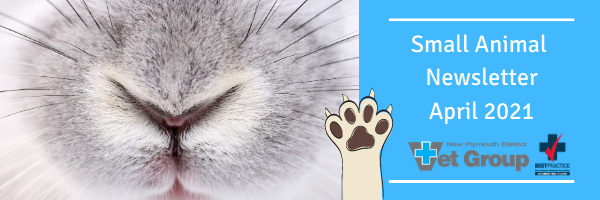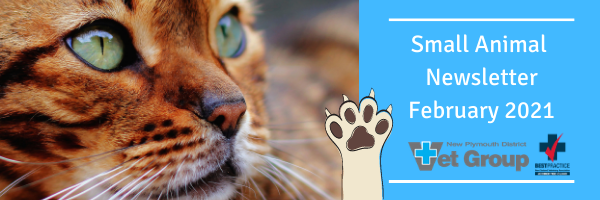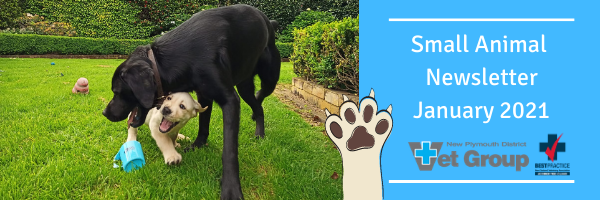We now offer Low Level Laser Therapy (LLLT also known as Photobiomodulation) Recently, we started offering…

Small Animal Newsletter – June 2020
“Cat Flu” – What is it and what should I do?
If your cat suddenly starts sneezing, has runny eyes, a loss of appetite and seems to be sleeping more, it may be possible they may have contracted the the “Cat Flu” or an Upper Respiratory Tract Infection.
“Cat Flu” also known as ‘snuffles’ is a very common disease we see in cats. It is often seen in stray or unvaccinated kittens, but any cat at any age can catch it. In some cases, it can be stress-related. While vaccination is the best form of prevention, vaccinated animals can still show mild symptoms in some cases.
- Sneezing
- Nasal Discharge
- Coughing
- Sore, gunky eyes
- Discharge from the eyes
- Loss of Appetite
- Lethargic
The best way to prevent cat flu is by making sure your cat is fully vaccinated. We recommend it is done yearly in high-risk cats but in some instances the vet may recommend biannual vaccinations.
No vaccine can give 100% protection, but vaccinated cats will normally have much milder symptoms than those of unvaccinated cats.
Treatment
Supporting them nutritionally is key to help with their recovery. Offering wet food slightly heated can entice them to eat if they have lost their appetite. Just like when we are suffering from a cold or flu, make sure they are getting plenty of fluids and staying hydrated.
The viral infection usually runs it course – normally around 10 days. The major signs that we would need to see your cat is when they stop eating or become quieter than usual.
Then treatment options might include fluid therapy, antibiotics to treat secondary bacterial infections, anti-inflammatories to lower a potential fever as well as supplementary feeding and decongestants to help loosen mucus.
“Cat Flu” is very contagious to other cats so it’s important to keep them separated if you have other cats living within the household. The disease is spread by anyone or anything that has touched an infected cat – so it is important to wash your hands before handling a healthy cat and make sure they do not share water bowls, food bowls or blankets.
Other things you can do at home:
- Keep them warm and give them somewhere quiet they can rest.
- Tempt them with delicious, strong-smelling wet food such as Hills A/D prescription food or cooked chicken. When they have a blocked nose they are less likely to want to eat as they can’t smell their food, so warming their food so it smells tasty and aromatic can sometimes help entice them.
- Clear away any gunk from their eyes and nose. If they do have a blocked nose – putting them in the bathroom while the shower is on – can help unblock their noses.
If in doubt contact us to discuss, or make an appointment to see a vet.
Keeping pet’s warm in winter
Winter has arrived! And it’s important to remember if you have started to feel the cold, so have your
Bedding – there are a few options to help heat your pet’s bedding. Adding a hot water bottle (with a cover) or a pet designed heat pad like Snugglesafe can give them some comfort. Thermal pet beds are a great option as they contain a reflective insert or are made of materials that reflect your cat or dog’s body heat. They are a safe option as they do not have any electrical wiring which is perfect for a destructive chewer.
If you are looking for an electrical-heated device Argus Pet Pad’s are a great safe option and are made in New Zealand so they comply with NZ Standards. You can find these at your local pet shop.
When using a device like this it is critical that the pet is able to move away from the bed if it becomes too warm. Never use a heated bed that can exceed a pet’s temperature in a crate or confined space that does not allow a pet an area away from the heat source.
With any heating device always be cautious and supervise your pet.
Food and water – Review your feeding amounts during the winter based on how active your pet is. If they are not doing as much exercise and are tending to sleep more – a slight reduction in their food intake can be beneficial and avoid them putting on extra kilos during the winter period. Always make sure they have clean fresh water available at all times.
Exercise – Maintaining an exercise routine during winter can be tricky – but just make sure they get out and about daily so they can stimulate their senses as this is really important for their wellbeing. If the rain is keeping you indoors, then change up the routine with some games like hide and seek.

Pay close attention to your pets during winter. Senior pets may have trouble moving in the colder months – if this is the case, it could be a sign of arthritis. If you notice sudden changes in behaviour or energy-level, it may be a good idea to bring them to your veterinarian for a general check over.
Arthritis – a hidden disease
Did you know that 80% of dogs over the age of 8 years old are likely to have arthritis?
Now that winter is here and temperatures have dropped you might notice your cat or dog has become stiffer, lame or just reluctant to jump up and down onto things. Just like with humans, arthritis becomes more painful and therefore more noticeable when the weather is cold.
Important things to be aware of:
Just because your animal doesn’t cry or whimper when they move doesn’t mean they aren’t in pain. It is extremely rare for an arthritic animal to make noise when they are sore. This type of behavior in animals is more commonly due to sudden trauma (i.e. being run over by a car) or after surgery. Instead, watch closely how they move.
- Are they walking evenly on all 4 legs with nice long strides or do they favour one side?
- Do they look a bit hunched through their back?
- Can they jump, run and turn quickly with no sign of hesitation?
- Do they get up from when they are lying down easily or is it a slow, deliberate process now?
Answering “Yes” to any of these questions may indicate they are experiencing pain.


I was once called out to a euthanasia of a lovely old golden Labrador who was really struggling with being able to get up from lying down and who was obviously in pain from arthritis. Whilst talking with the owners I discovered that she had never been given any type of pain relief as they owners didn’t know that this was an option. Instead of saying goodbye to their beloved pet they decided to try a course and that dog had a further 10 months of really good life before it was finally time to say goodbye. The owners were really grateful that the medications had allowed her to return to a much more comfortable, active life during those months.
If you think that your animal might be suffering from arthritis either book in to see one of our vets or alternatively ask to see one of our trained nurses for a mobility clinic.
Dr Nicola Williams BVS
Take our arthritis risk quiz here
Staff Showcase
Vet Nurse – Averil Osborne

Averil is the proud owner of a ginger rescue cat called Ed. He came to the clinic as a stray, and as it was a long weekend she decided she would take him home to stay a few nights. From then he just moved on in. He has had to overcome some challenging health issues, so Ed is very lucky he was adopted by a vet nurse – so he could receive the care he needed.
Outside of work usually sees Averil driving her classic car, a Mustang to car events in Taranaki and around New Zealand.
Instagram superstar
Meet Ms Pamela – always looking for a treat!

Have you checked out our Instagram page yet? Updated daily – Meet our pet visitors and patients! Click here!





